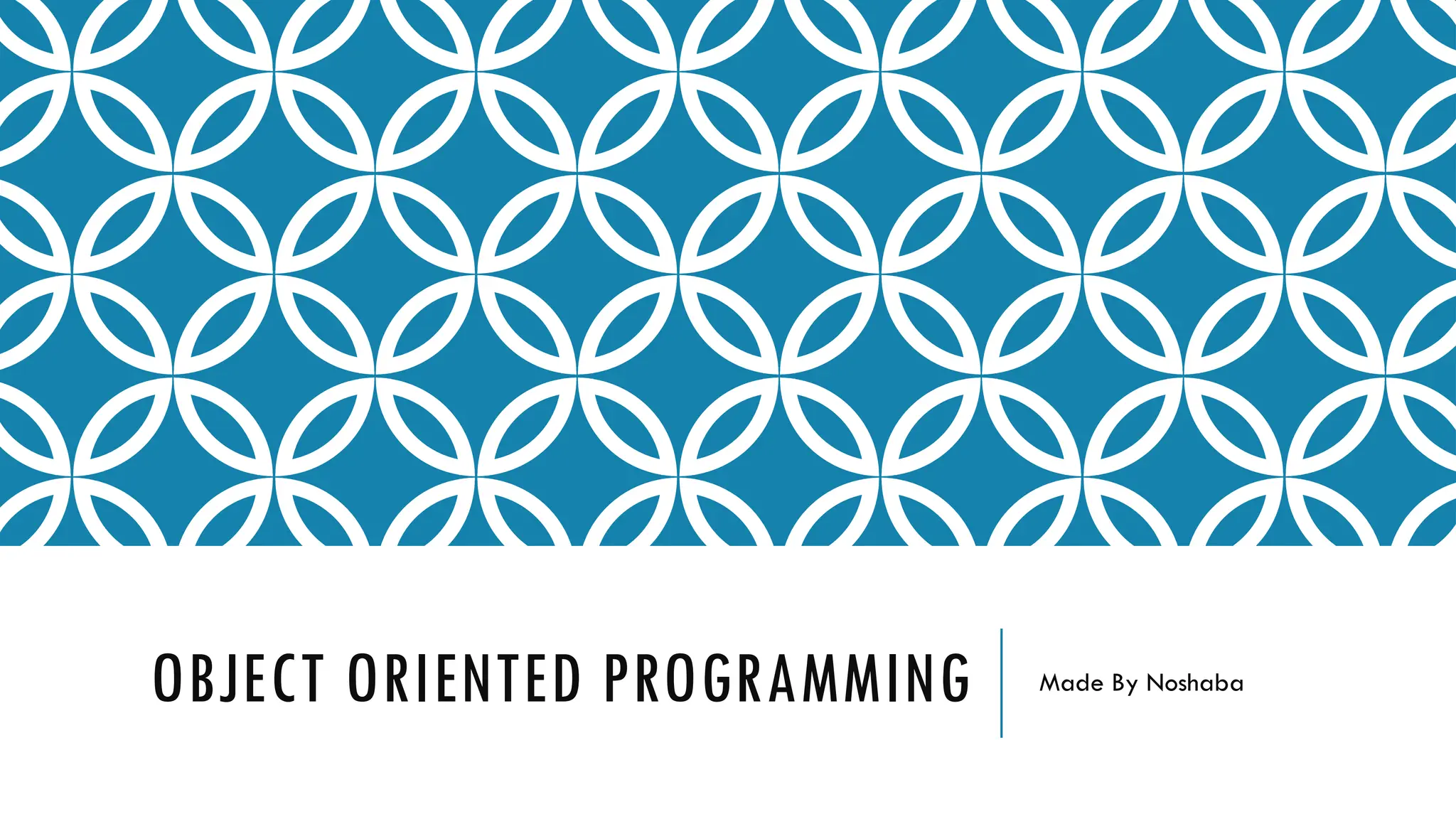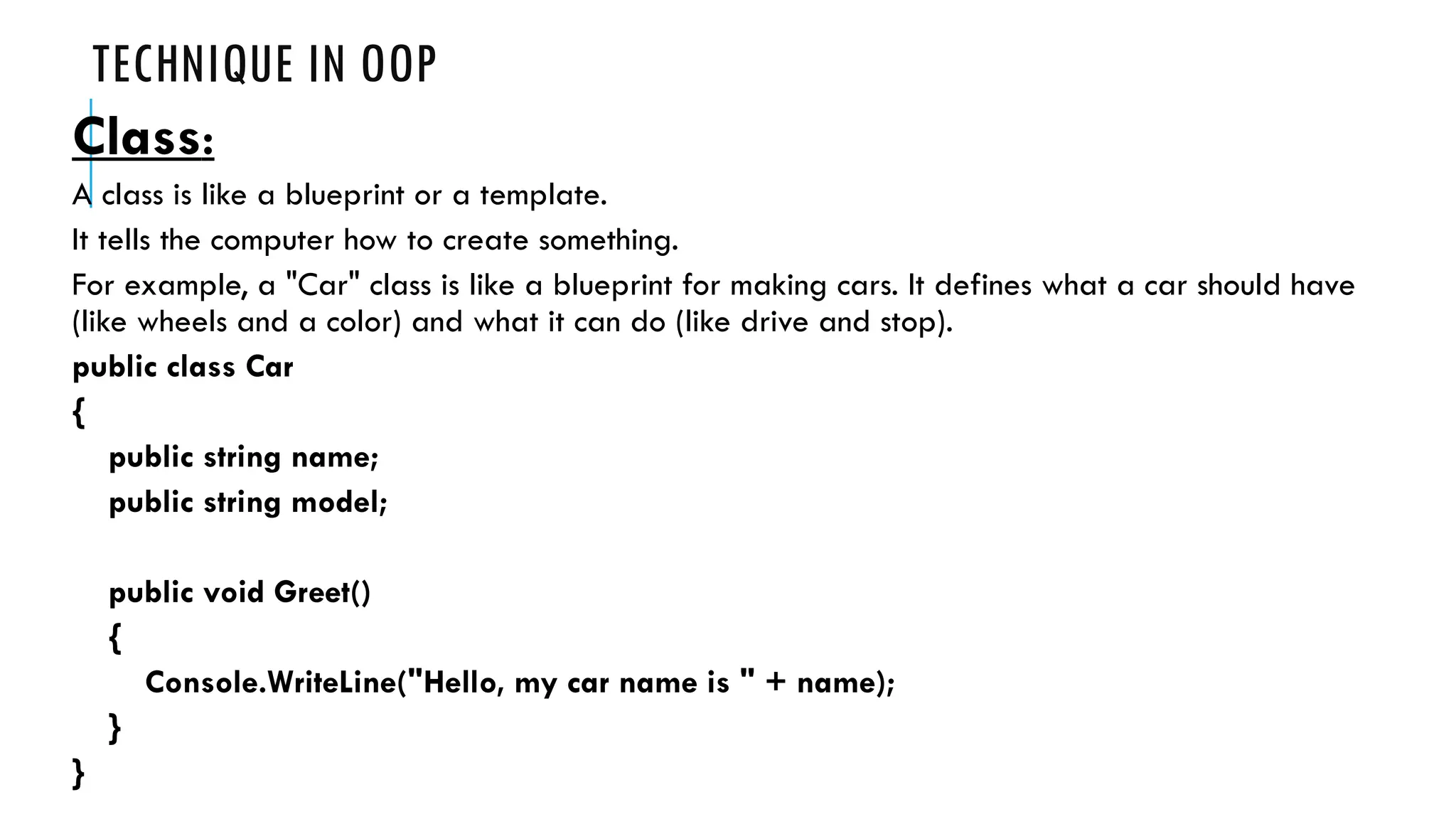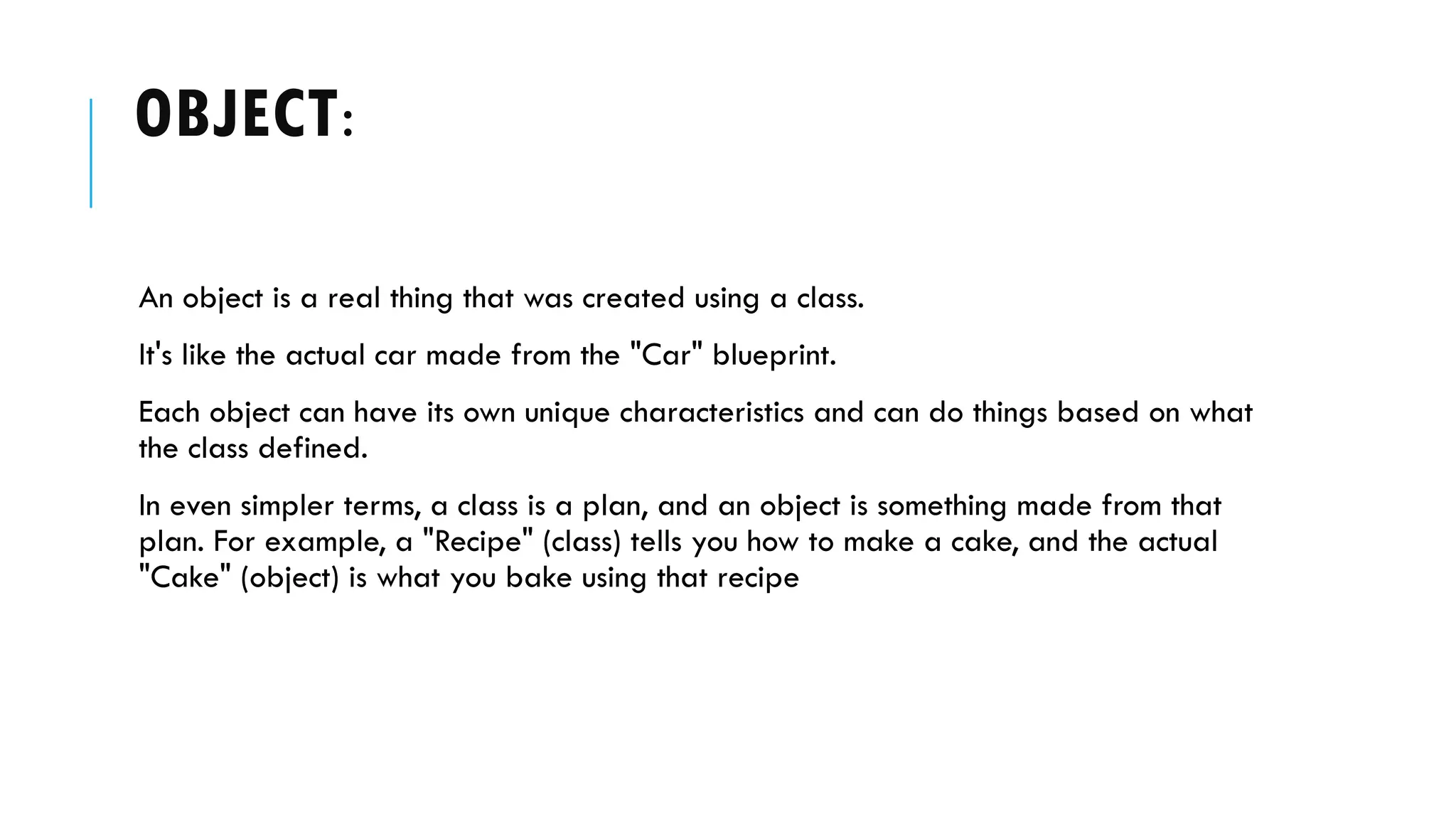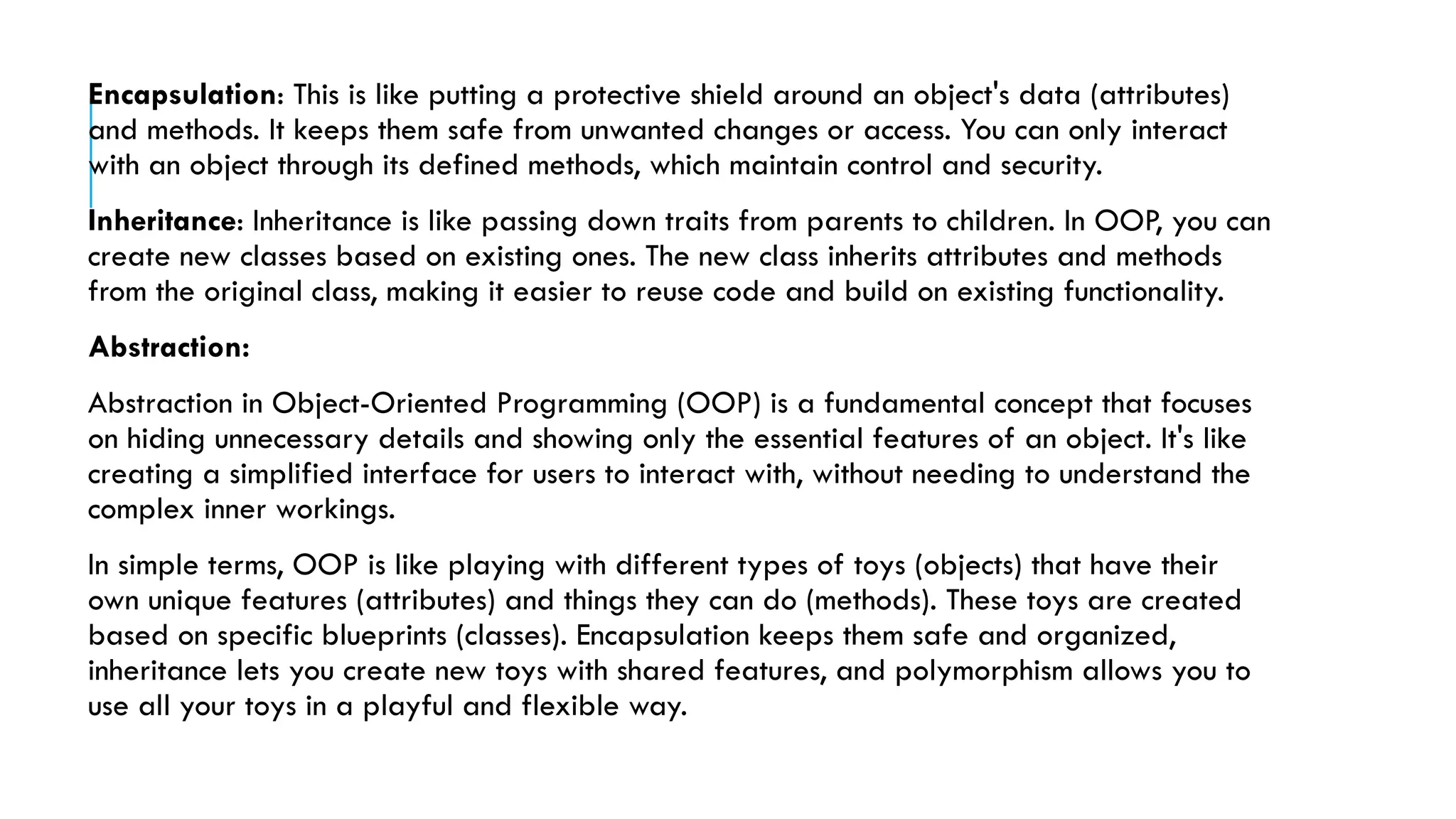Object-oriented programming (OOP) is a coding approach that organizes software using objects, which encapsulate data and methods, promoting efficiency and reusability. Key concepts of OOP include classes (blueprints for objects), encapsulation (protecting data), inheritance (sharing features), and abstraction (hiding complex details). OOP enhances code organization, making it easier to manage and adapt programs akin to using folders for files.







